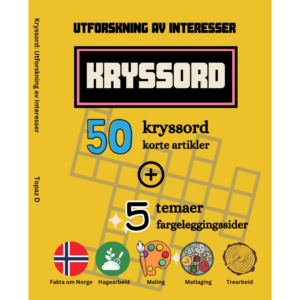
Explore & Play
Discover interesting topics and solve the accompanying crossword puzzle.
Suffering crossword | Human Pain and Resilience
Table of Contents
Start by diving into our Suffering crossword to challenge your understanding of human pain and resilience. If you’re unfamiliar with the topic or want to gain deeper insights, feel free to read the article first and then return to the crossword to test your knowledge.
Suffering Crossword
You can either fill in the crossword puzzle directly on this page or click the button in the bottom right corner to print it for free.

Faces of Human Suffering: Understanding Pain and Resilience
Suffering is a universal experience, touching every life in different ways, from the physical pains that grip our bodies to the emotional turmoil that weighs on our hearts. Whether it takes the form of grief, hardship, or mental anguish, suffering is an inescapable part of the human condition. This article explores the many faces of suffering and the incredible resilience that people demonstrate in its wake. As you read, you might find yourself reflecting on your experiences and perhaps engaging further with a special crossword puzzle that challenges you to think about these various aspects of suffering.
1. Defining Suffering: What Does It Mean to Suffer?
To understand suffering, we must first define it—what does it mean to truly suffer? Suffering can manifest in numerous forms, ranging from physical pain to emotional distress. It encompasses everything from the sharp sting of injury to the deep ache of a broken heart. Words like pain, agony, misery, and torment illustrate the breadth of this experience.
At its core, suffering is a state of being in which a person feels overwhelmed by negative experiences. It may arise suddenly, like the unexpected blow of a personal loss, or it may develop gradually, as in the case of chronic illness or ongoing hardship. Regardless of its form, suffering is a deeply personal experience that shapes our perspectives and our responses to life’s challenges.
2. Physical Pain: The Body’s Cry for Help
Physical pain, whether acute or chronic, is perhaps the most immediate and recognizable form of suffering. It serves as the body’s cry for help, signaling that something is wrong and needs attention. This pain can range from the sharp sting of a minor injury to the relentless ache of chronic conditions that never fully subside.
In addition to pain and ache, there are terms like discomfort and malaise, which describe the more subtle, lingering sensations of physical distress. Traumatic injuries, surgical recovery, and debilitating diseases are all examples of how physical suffering can take hold of the body and become a constant companion.
Physical suffering is not just a matter of sensation; it impacts every aspect of a person’s life, from their ability to work and move to their capacity for joy and connection. The limitations imposed by pain often lead to secondary emotional suffering, such as distress and misery.
3. Emotional and Psychological Suffering: The Invisible Burden
Unlike physical pain, emotional and psychological suffering often remains unseen, hidden beneath the surface. It is the invisible burden carried by many, manifesting as grief, heartbreak, despair, and woe. These forms of suffering are just as real as physical pain, but they are often harder to express and understand.
Emotional suffering can arise from a variety of sources: the loss of a loved one, a broken relationship, or the crushing weight of unfulfilled dreams. Feelings of anxiety, depression, and anguish can seep into every aspect of life, coloring even the brightest moments with shades of gray. This type of suffering is often compounded by the stigma surrounding mental health, which can make people feel isolated or ashamed of their struggles.
Understanding emotional suffering is critical for breaking down these barriers and providing the support that individuals need to heal. It is a reminder that suffering is not always visible, but it is always significant.
4. The Agony of Loss: Grief and Mourning
Grief is a profound form of suffering, rooted in the pain of losing someone or something dear. It can feel like an unending wave of sorrow, washing over a person again and again, no matter how much time has passed. Grief is not just about missing someone; it is about mourning a future that will never be.
Grief often leads to other forms of suffering, such as heartache and sorrow. People grieve in different ways, and no single experience is the same. Some find solace in traditions or rituals, while others seek comfort in solitude. Cultural differences in mourning practices can profoundly affect how grief is experienced and processed. Yet, despite these differences, the pain of grief remains a universal human experience.
Navigating grief requires patience and self-compassion. It is a journey with no defined end, but understanding its nature can help make the process more bearable.
5. Hardship and Misfortune: Life’s Unexpected Challenges
Life is filled with hardships and misfortunes that test our strength and resilience. These challenges come in many forms: financial struggles, job loss, natural disasters, or sudden illnesses. Each represents a unique kind of suffering that requires its own coping mechanisms.
Hardship can manifest as misfortune, deprivation, or struggle, making life feel like an uphill battle. When faced with such challenges, people often experience a range of emotional responses, from despair and torment to moments of quiet strength and determination.
However, even amidst hardship, there is an opportunity for growth. Overcoming adversity builds resilience, teaching us that while we cannot control the circumstances, we can control our responses.
6. Chronic Suffering: When Pain Becomes a Constant Companion
For some, suffering is not a temporary state but a chronic condition that shapes their daily reality. Chronic suffering—whether from persistent physical pain or ongoing emotional distress—can feel like a life sentence, creating a sense of misery and torment that never fully lifts.
Conditions such as chronic pain, illness, or prolonged emotional distress can significantly impact one’s quality of life. Those who endure such suffering often find themselves grappling not only with the pain itself but also with feelings of hopelessness, anxiety, and depression that can accompany it.
Despite the seemingly unending nature of chronic suffering, many find ways to adapt and cope. They learn to live with their pain, finding moments of joy and meaning amid the darkness.
7. The Resilience of the Human Spirit: Finding Strength Amidst Suffering
In the face of suffering, the human spirit shows an extraordinary capacity for resilience and recovery. Resilience is the ability to bounce back from adversity, to find strength in the most unlikely of places, and to continue moving forward, even when the path seems impossible.
People demonstrate resilience through endurance, perseverance, and the capacity for growth. They find ways to adapt, heal, and ultimately transform their suffering into a source of strength. Stories of individuals who have overcome tremendous adversity remind us that while suffering is inevitable, it does not have to define us.
8. The Role of Compassion and Empathy in Alleviating Suffering
Compassion and empathy are powerful tools in reducing suffering, both for oneself and others. When people feel understood and supported, their suffering becomes more bearable. Acts of kindness, empathy, and solidarity can create a buffer against the emotional pain and provide a sense of comfort and belonging.
Practices like therapy, mindfulness, and community support are critical in alleviating mental anguish and emotional pain. The role of empathy and compassion is to offer a hand, a shoulder, and a heart, making the journey through suffering less lonely and more hopeful.
9. Creative Expression as a Path to Healing
Art, music, writing, and other creative expressions have long been ways to process and heal from suffering. Creative activities offer a means to express feelings that may be too complex or painful to articulate with words.
Whether it’s through painting a picture, writing a poem, or playing a musical instrument, creativity can serve as a therapeutic outlet, providing a way to release and transform pain. It offers a sense of catharsis and helps foster recovery. Many find that engaging in creative endeavors allows them to move through their suffering and emerge stronger on the other side.
10. Moving Forward: Embracing the Path of Healing
While suffering is an inevitable part of life, understanding it can help us find ways to endure, heal, and grow. Recognizing the different forms of suffering—from physical pain to emotional distress—allows us to approach our own and others’ experiences with greater empathy and compassion. By acknowledging suffering, we also open ourselves to the possibility of resilience, hope, and renewal.
Each form of suffering teaches us something unique, urging us to reach out, to create, and to find meaning even in the darkest moments. Embrace your journey through suffering, knowing that while pain may be unavoidable, it is also a pathway to understanding and strength.
Bonus: Try Our Crossword Challenge on Suffering!
To deepen your understanding of suffering and resilience, try our crossword puzzle filled with terms related to pain, loss, and recovery. It’s not just a challenge for your mind, but a journey through the many forms of suffering we all experience. Play the crossword now, and see how many words you recognize!
Share to...
I hope you enjoy the content.
Want to receive our daily crossword puzzle or article? Subscribe!
You may also be interested in
Share to…
Want to receive our daily crossword puzzle?
-
Jigsaw Puzzles
Flåm Railway Abstract Art Jigsaw Puzzle 250 | 300 | 500 Pieces
kr 348,00 – kr 439,00Price range: kr 348,00 through kr 439,00 Select options This product has multiple variants. The options may be chosen on the product page -
Jigsaw Puzzles
Twelve Zodiac Mice Ink Wash Jigsaw Puzzle 250 | 300 | 500 Pieces
kr 348,00 – kr 439,00Price range: kr 348,00 through kr 439,00 Select options This product has multiple variants. The options may be chosen on the product page -
Jigsaw Puzzles
Majestic Stag Watercolor Jigsaw Puzzle 250 | 300 | 500 Pieces
kr 348,00 – kr 439,00Price range: kr 348,00 through kr 439,00 Select options This product has multiple variants. The options may be chosen on the product page

















